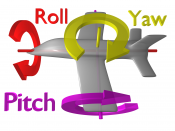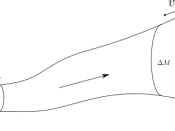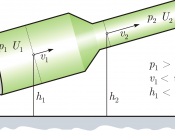This paper will attempt to discuss the basic aerodynamic principles of flight. It will be based on Module 3, Learning Objective 1: 'For a typical aircraft, describe the functions of the structure and the flight controls. Apply aerodynamic principles to explain how flight controls control pitch, roll, and yaw'. It will also outline the basic control surfaces of an aircraft and the primary and secondary effects of each of them. In addition, it will also explore Bernoulli's Principle and the forces acting on an aircraft in flight.
Table of Contents
List of Figures
Figure 1: The Magic of Flight 3
Figure 2: Main Components of an Airplane 4
Figure 3 : The Wing And Aerofoil 5
Figure 4 : Aerofoil Nomenclature 6
Figure 5 : Bernoulli's Principle 7
Figure 6 : Forces on An Airplane in Flight 8
Figure 7 : The 3 Axes of Rotation 9
Figure 8 : 6 Degrees of Freedom 10
Figure 9 : Control Surface: Ailerons 11
Figure 10 : Control Surface: Elevators 11
Figure 11 : Control Surface: Rudders 11
Introduction
Man has come a long way since the advent of the first heavier-than-air flight by the Wright brothers back in 1903.
In the span of merely a century and a decade, we have achieved an astounding feat of aeronautical capability. From the biplanes of WW2 to the successful launch of NASA's Space Shuttle orbiter, Man's thirst for the quest of achieving airborne flight with the birds has always been a source of great admiration and fascination. Those of us who were "bitten" with the 'flying bug' from a very young age can vouch for the sheer thrill and adrenaline rush of rolling down the runway in an insane but fulfilling roller...


